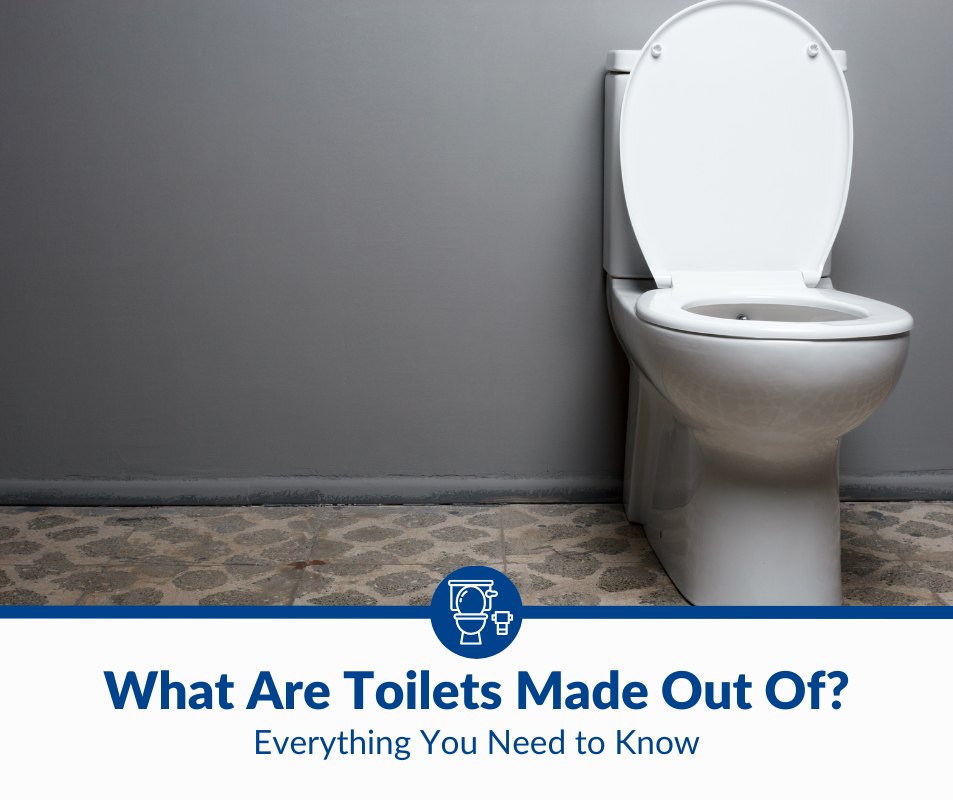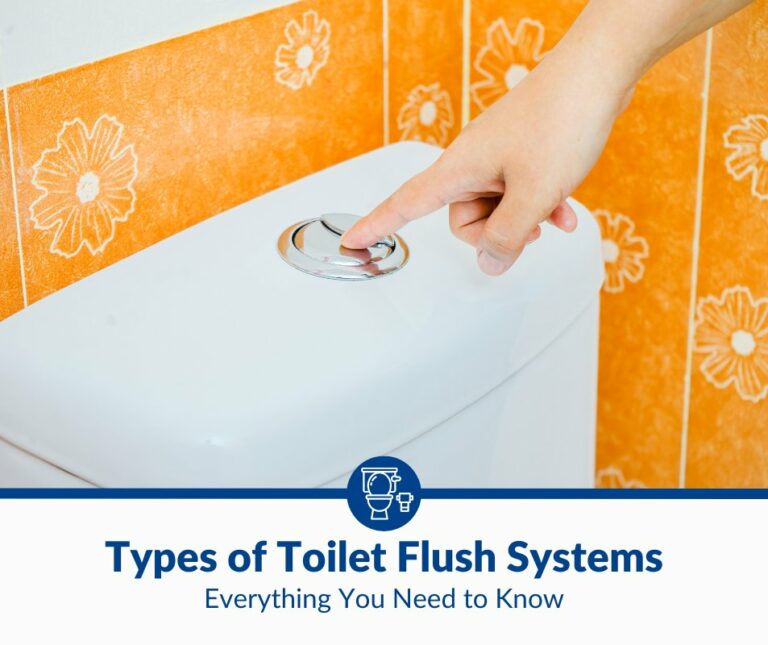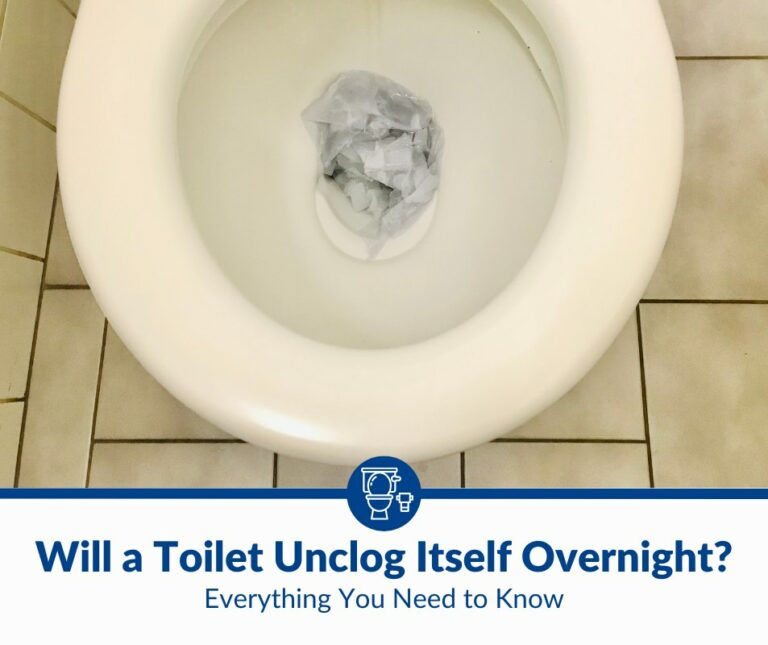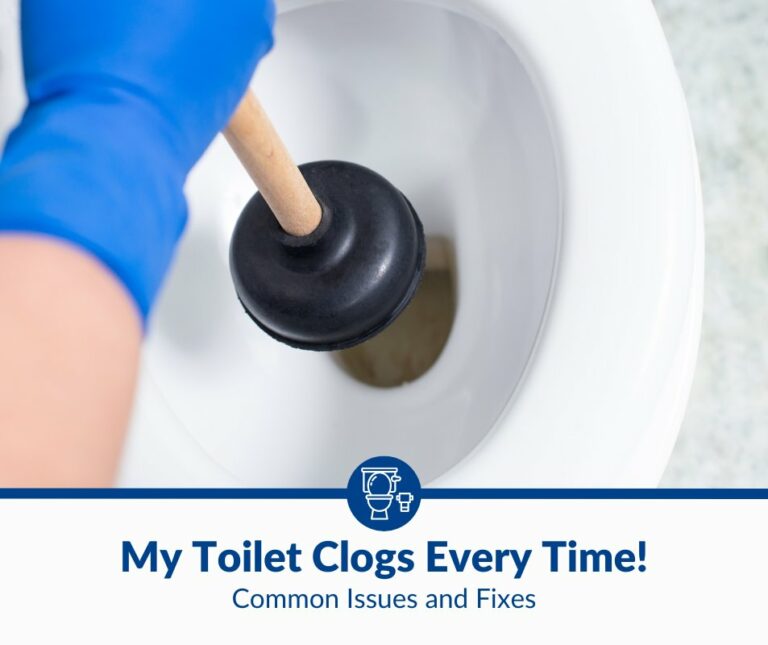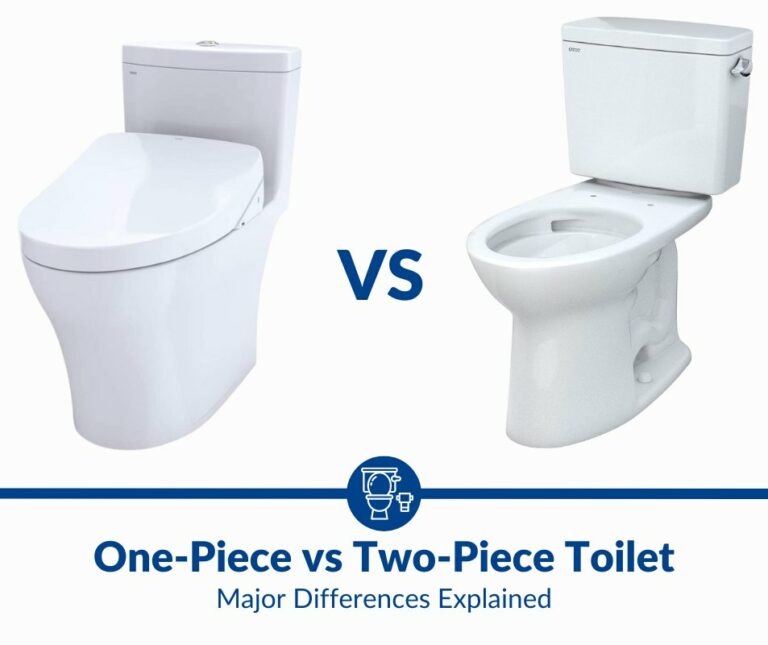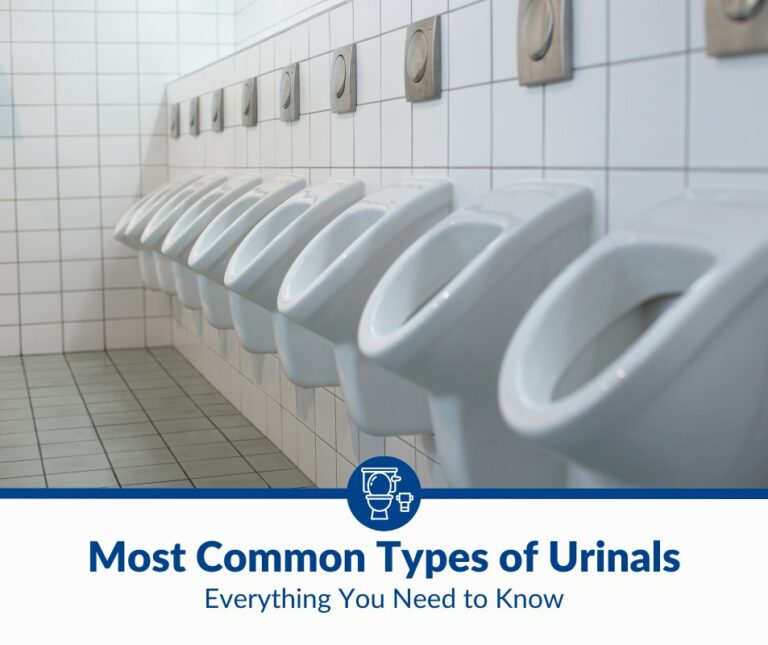What Are Toilets Made Out of and Why?
Toilets are a necessary part of modern life, but have you ever stopped to consider what materials they’re made from and why? There is a wide variety of toilet materials available, each with its advantages and disadvantages.
Toilets are most commonly made of porcelain, and there is a good reason for that. Porcelain has a smooth surface and is a durable and strong material that can resist the forces of heat, cold, and moisture. Other materials such as ceramic, plastic, and metal can also be used to make toilets.
In this blog post, I’ll discuss why porcelain is the go-to material for making toilets and other materials that are sometimes used. I’ll also cover what to look for when selecting a toilet to ensure you get the best quality and performance.
Why Are Toilets Made of Porcelain?
Today, most toilets are made out of porcelain, a type of clay, because of the unique qualities that make it ideal for this purpose.
The Advantages of Porcelain Toilets
Porcelain has been a material of choice when it comes to toilets for centuries. Porcelain toilets are known for their strength and longevity. Additionally, porcelain offers some key advantages when it comes to designing toilets.
- Porcelain is a durable material. Porcelain is extremely durable and can withstand heat, cold, and everyday wear and tear. The durability means that toilets made of porcelain are resistant to scratches, stains, and rust and require minimal maintenance. This resistance and durability make them ideal for residential and commercial toilets.
- Porcelain is heat-resistant. Porcelain toilets are highly heat-resistant, meaning they won’t crack or break if exposed to high temperatures. The heat resistance is helpful in spaces like bathrooms with showers or hot tubs, as the hot water or steam won’t damage the material.
- Porcelain is easily cleaned. Porcelain is non-porous, which means it doesn’t absorb liquids like other materials. This makes porcelain toilets easier to clean and maintain than toilets made from other materials. Porcelain is also less likely to harbor bacteria or fungi than other materials, making it a hygienic choice for your bathroom.
- Porcelain offers flexibility in color and style. Porcelain toilets are available in various colors and styles, allowing you to choose a toilet that fits your style and decor. Additionally, porcelain has a shiny finish that can give your bathroom a polished look.
- Porcelain is relatively affordable. Porcelain toilets are more affordable than other types, such as those made from stainless steel or plastic. This affordability makes them an excellent option for those looking for an attractive yet budget-friendly toilet.
Are There Any Disadvantages of Porcelain Toilets?
Like any other material, there are a few drawbacks to porcelain toilets.
- Unfavorable weight distribution. The porcelain used to make toilets is generally heavier than other materials, such as stainless steel or plastic. The weight makes them harder to install and may require additional support to prevent any damage from occurring.
- The fragility of porcelain. Porcelain toilets can be fragile when exposed to extreme temperatures or impacts. While porcelain is incredibly durable, it can crack or chip if not handled properly. Additionally, due to their brittle nature, porcelain toilets can be noisy when flushed.
- Acidic substances can damage porcelain. Another disadvantage of porcelain toilets is that they are susceptible to damage from acidic substances and harsh cleaning chemicals. These cleaners will cause discoloration, pitting, and even more severe damage if exposed for a prolonged period.
Other Materials Used To Make Toilets: Pros and Cons
While porcelain is the most common material used to make toilets, manufacturers may use a few other materials. These materials include the following.
- Ceramic
- Plastic
- Stainless steel
Ceramic
Ceramic toilets have the same durability and heat resistance as porcelain toilets and are more affordable.
The downside is ceramic toilets can chip or crack easily if exposed to extreme temperatures or impacts. Additionally, they can be challenging to install and require more maintenance than porcelain toilets.
Plastic
Plastic toilets are much lighter than their ceramic and porcelain counterparts, making them easier to install and transport. They also come in various colors and styles, so you can find one to fit your decor. However, plastic toilets tend to be less durable and may require more frequent replacements.
Stainless Steel
The most expensive of the four materials, stainless steel toilets are also the most durable. They resist corrosion and heat well, making them perfect for high-traffic areas. However, they can be quite noisy when flushed due to their weight and material. Additionally, they tend to be more expensive than the other materials.
Factors To Consider When Choosing a Toilet
When choosing the right toilet for your home, there are key factors to remember.
- Personal preferences. The toilet should match the style and design of the rest of the bathroom. Whether you prefer a traditional, modern, or unique look, there are many toilet designs to choose from that will fit any aesthetic.
- Consider the features of the toilet. Various features are available such as dual flush, water-saving models, heated seats, and bidets. Make sure to choose a toilet that meets all of your needs.
- Size and layout of the bathroom. You want to ensure that the toilet will fit comfortably in the space and provide adequate space for other fixtures like sinks and bathtubs.
- Installation requirements. Some toilets require more complicated and time-consuming installation processes, while others can be installed relatively quickly.
- Your budget. The cost of toilets can range from a few hundred dollars to several thousand dollars depending on the quality, features, and materials used. Set a realistic budget before you start shopping, and research different models and brands to find the best quality within your price range.
- Quality and performance. Make sure to read reviews on different models and brands to make sure that you are getting the best quality for your money. Consider features such as dual flush, water conservation ratings, noise levels, and ease of installation.
The History of Toilets and Their Roles in Modern Society
Toilets have been around for centuries and have played a vital role in society throughout the ages.
The earliest known toilets date back to 2500 BCE in the Indus Valley Civilization, with crude stone-built drains used for disposing of human waste. Over time, toilet technology evolved, and by the 16th century, early forms of flush toilets were developed.
The History of Toilet Materials
Since ancient times, toilets have significantly evolved in terms of the materials used in their construction. As our knowledge of technology and engineering has grown, so has our understanding of which materials are best for a safe, durable, and efficient toilet.
Evolution From Ancient to Modern Toilet Materials
Toilets have been around since antiquity. Some earliest examples were found in ancient civilizations like the Indus Valley and the Roman Empire. Initially, most toilets were made from stone, brick, or clay, but as technology advanced, so did the materials used to construct toilets.
With the Industrial Revolution came new materials such as cast iron, steel, and even plastics, allowing toilets to become more efficient and less labor-intensive.
The Impact of Technological Advancements on Toilet Manufacturing
The invention of the flushing toilet in the late 16th century was a significant turning point in toilet manufacturing.
The toilet could now efficiently flush away waste and reduce odor by introducing water into the equation. This was just the beginning of technological advancements in toilet manufacturing.
Modern toilets feature a range of technologies and are made from durable materials that are easy to maintain. All these features are a testament to the tremendous progress made in toilet manufacturing over the centuries.
The Future of Toilet Materials
As technology continues to develop, so do the materials and technologies used in toilet manufacturing. New materials such as ceramic composites and glass can help create toilets that are even more efficient and long-lasting than those of today.
Toilets are likelier to become lighter, easier to install, and easier to maintain. There is a concerted effort to reduce the water consumed in flushing toilets as well. Moreover, emerging technologies such as intelligent sensors are paving the way for a future where toilets can be self-cleaning and someday, even completely waterless.
Through emerging materials and technologies, we may see potential improvements in performance, sustainability, and overall user experience. As such, it is important to keep an eye on new developments to ensure we get the best quality toilet for our home.
Final Thoughts
Choosing the right toilet for your home is a big decision that should not be taken lightly. When making your decision, it is crucial to consider your budget, quality, performance needs, and any future technological advancements. By considering all of these factors, you can ensure that you get the best possible toilet for your home.
It is essential to research and explore all options available to find a toilet that fits your preferences and needs. With the right information, you can make an informed decision and find the perfect toilet for your home.

